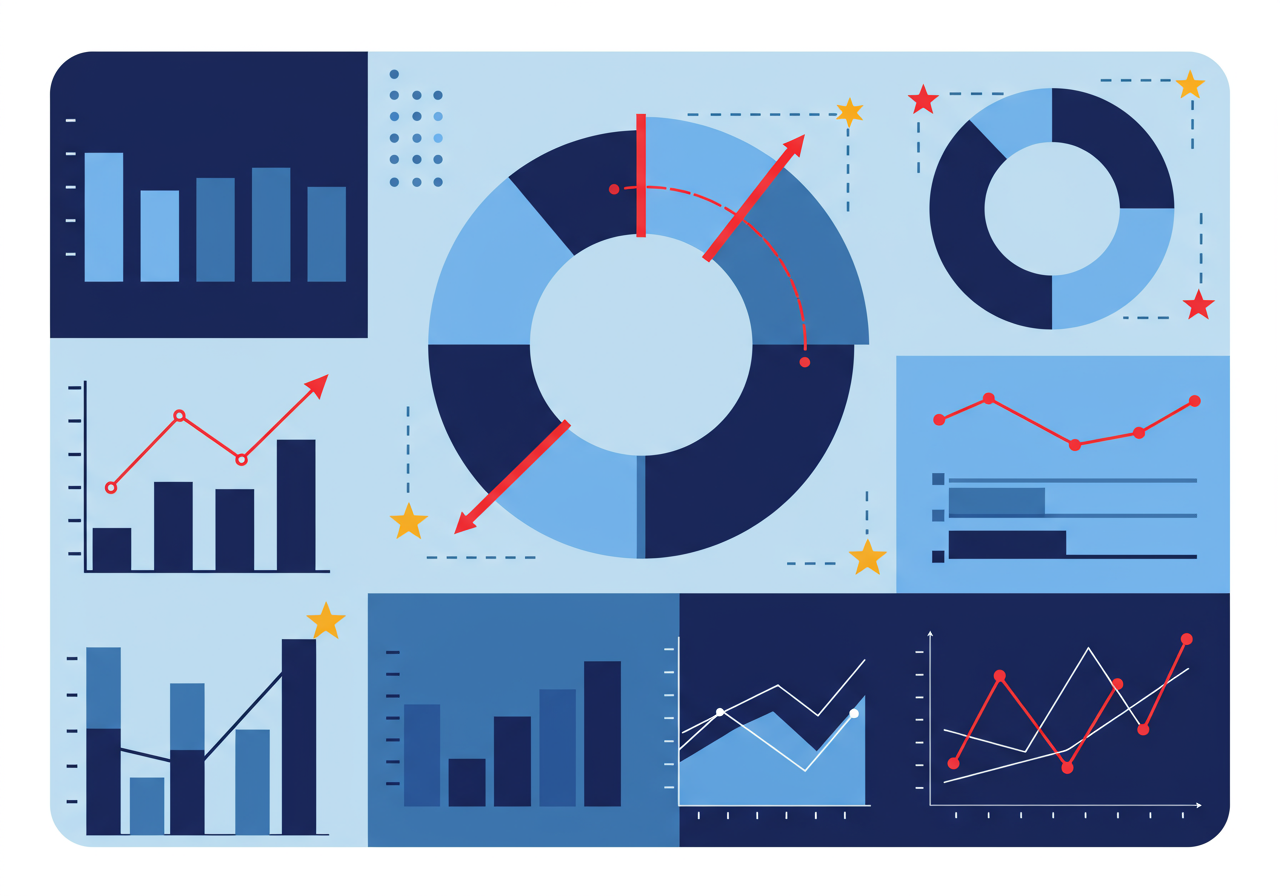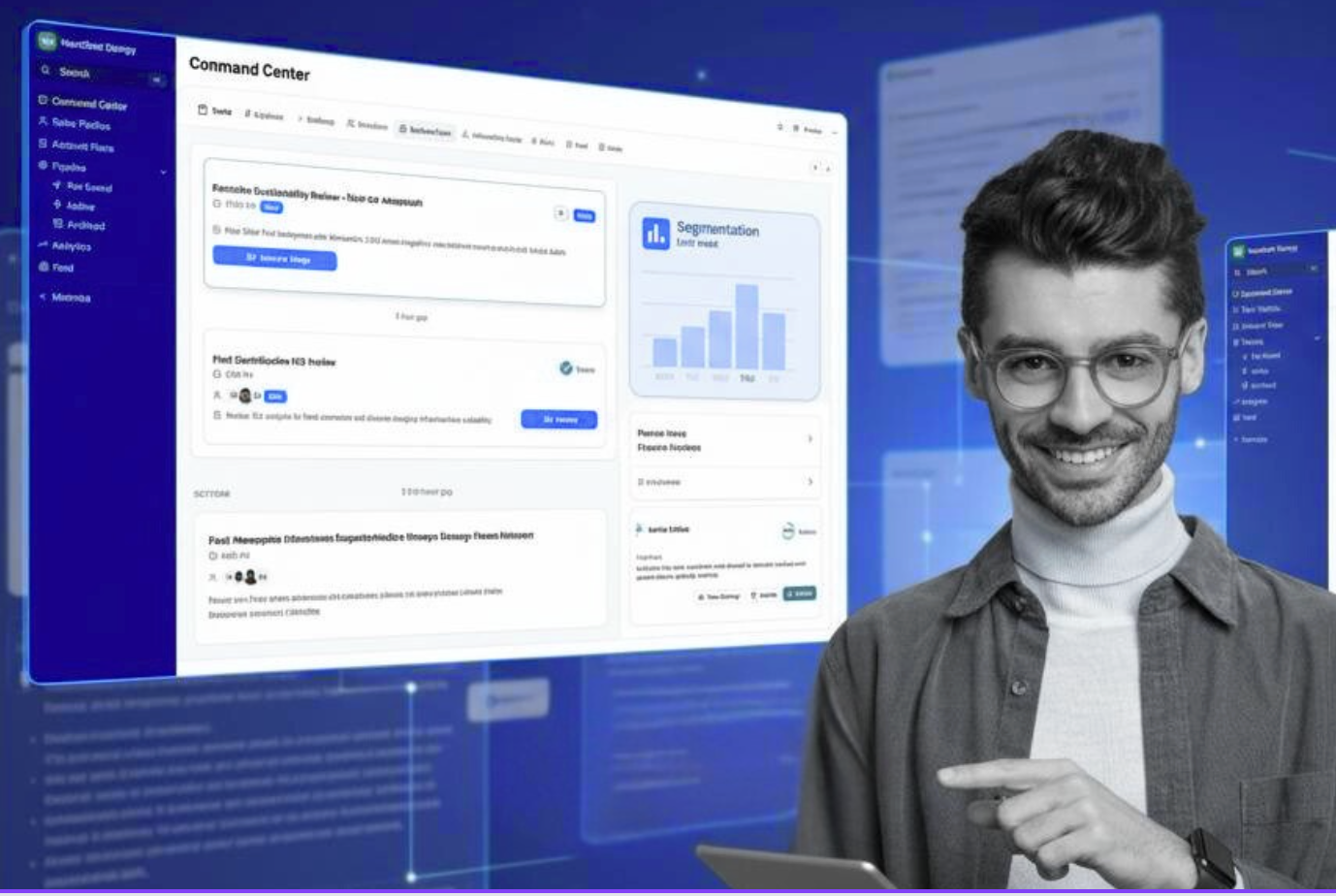The 73% Forecasting Gap CROs Face and How AI Closes It
Why traditional sales forecasting methods fail and how AI sales intelligence is dramatically changing revenue visibility
Estee Woods
VP of Marketing

Picture this: You're four weeks into Q3, and your board is asking for updated revenue projections. Your CRM shows a healthy pipeline, your reps are optimistic, and your analytics dashboard displays encouraging trends. Yet deep down, you know the forecast you're about to present could be wildly inaccurate.
You're not alone. Across industries, revenue leaders face an uncomfortable truth: Despite massive investments in sales technology and data analytics, most organizations cannot reliably predict their quarterly numbers.
Recent studies illuminate the scope of this challenge. Research by Challenger Inc. demonstrates that achieving forecast accuracy within 10% remains elusive for most sales organizations, while analysis from Spaulding Ridge shows that business volatility has intensified forecasting difficulties, with 129 S&P 500 companies revising annual revenue projections in just six months, representing a 50% spike from prior periods.
The fundamental issue isn't mathematical modeling or analytical sophistication. The problem lies deeper: critical information blind spots that render even the most advanced forecasting techniques ineffective.
Breaking Down the Prediction Paradox
Contemporary revenue forecasting operates on historical data and known variables. Sales leaders analyze closed deals, active opportunities, and pipeline progression to extrapolate future performance. This retrospective approach creates systematic vulnerabilities that compromise accuracy.
Four foundational information gaps undermine forecasting reliability across organizations:
Information Gap #1: Incomplete Territory Coverage
Sales professionals typically engage with a fraction of their assigned market. Research indicates that representatives managing 175+ accounts maintain regular contact with fewer than 30. This selective focus means that substantial revenue opportunities, and often 60-80% of market potential remain completely invisible to forecasting algorithms.
When revenue projections rely exclusively on known prospects and active engagements, they systematically underestimate total addressable pipeline. Meanwhile, competitors capture business in segments that never appear in your forecasting models.
Information Gap #2: Stakeholder Identification Failures
Complex B2B transactions involve multiple decision influencers, typically 6-10 individuals with varying authority levels, evaluation criteria, and approval processes. Traditional sales development identifies responsive contacts and meeting participants, but frequently misses budget holders, technical gatekeepers, and executive sponsors who determine final outcomes.
Incomplete stakeholder mapping creates forecast volatility. Deals that appear "committed" suddenly encounter resistance from unidentified influencers. Timeline projections become unreliable when unknown decision-makers introduce additional evaluation requirements.
Information Gap #3: Premature Signal Dependency
Most sales intelligence platforms focus on explicit purchase indicators: formal evaluations, vendor competitions, or budget allocations. However, these obvious signals emerge when prospects have already progressed 60-70% through their decision journey. By this point, relationships, positioning, and competitive dynamics are largely established.
The highest-value opportunities originate 6-12 months before explicit purchasing behavior, triggered by strategic planning cycles, leadership transitions, or regulatory requirements. Organizations that recognize and respond to these early indicators establish significant competitive positioning advantages.
Information Gap #4: Prioritization Paralysis
Even comprehensive account data becomes ineffective without intelligent interpretation. Which opportunities deserve immediate attention? What engagement timing optimizes response rates? Which messaging resonates with specific stakeholder types?
Without systematic prioritization frameworks, sales teams distribute effort across numerous moderate-probability prospects rather than concentrating resources on high-conversion opportunities within realistic timeframes.
Artificial Intelligence: The Forecasting Game-Changer
Cutting-edge organizations are eliminating these information gaps through AI-driven sales intelligence that transforms revenue prediction from educated guesswork into data-driven science.
Advanced AI platforms process extensive external datasets like corporate announcements, regulatory submissions, professional networks, technology implementations, executive appointments, and competitive movements to identify opportunities that conventional methods cannot detect. These systems recognize purchasing triggers months before traditional signals appear and construct comprehensive stakeholder maps including decision-makers who never engage directly with sales teams.
The performance improvements are substantial. Organizations deploying comprehensive sales intelligence report achieving forecast variance of ±8% compared to the ±35% typical with traditional methods, while simultaneously accelerating deal velocity and expanding average transaction values.
ShiftUp: Reshaping Revenue Intelligence
ShiftUp exemplifies next-generation AI sales intelligence, engineered specifically to eliminate the information gaps that undermine forecasting accuracy. The platform addresses each critical vulnerability through sophisticated analytical capabilities:
Complete Territory Analysis: ShiftUp continuously evaluates entire market territories, identifying revenue opportunities within previously neglected accounts. Rather than reactive account management across a limited subset, sales teams discover systematic pipeline development across complete assignments.
Comprehensive Stakeholder Intelligence: The platform maps complete buying ecosystems, budget authorities, technical evaluators, internal advocates, and process influencers, before initial contact, providing full visibility into decision dynamics and approval workflows.
Predictive Signal Recognition: ShiftUp identifies purchasing intent 6-12 months in advance by analyzing executive appointments with transformation responsibilities, technology infrastructure changes, merger integration requirements, and compliance obligations that generate future procurement needs.
Intelligent Activity Orchestration: Daily, sales professionals receive prioritized action guidance based on purchase probability, optimal engagement timing analytics, and proven messaging frameworks for deal advancement.
Organizations implementing ShiftUp report discovering $12M in previously unidentified pipeline opportunities, accelerating deal completion by 38%, and improving sales productivity by 45% through strategic focus optimization.
The Strategic Advantage
Organizations that master forecasting accuracy first will secure lasting competitive benefits. While competitors navigate quarterly unpredictability and target shortfalls, companies with predictive revenue intelligence can execute confident expansion strategies, aggressive talent acquisition, and strategic market positioning based on reliable pipeline visibility.
The fundamental question facing revenue leaders isn't whether artificial intelligence will reshape sales forecasting, it's whether their organization will pioneer or follow in adopting the intelligence capabilities that enable accurate prediction.
Perfect forecasting may remain impossible, but precision sufficient for confident strategic decision-making is achievable today. For Chief Revenue Officers exhausted by quarterly volatility and missed projections, AI-powered sales intelligence provides a clear path from uncertainty to predictability.
The technology is proven. The methodology is established. The remaining variable is execution speed.


